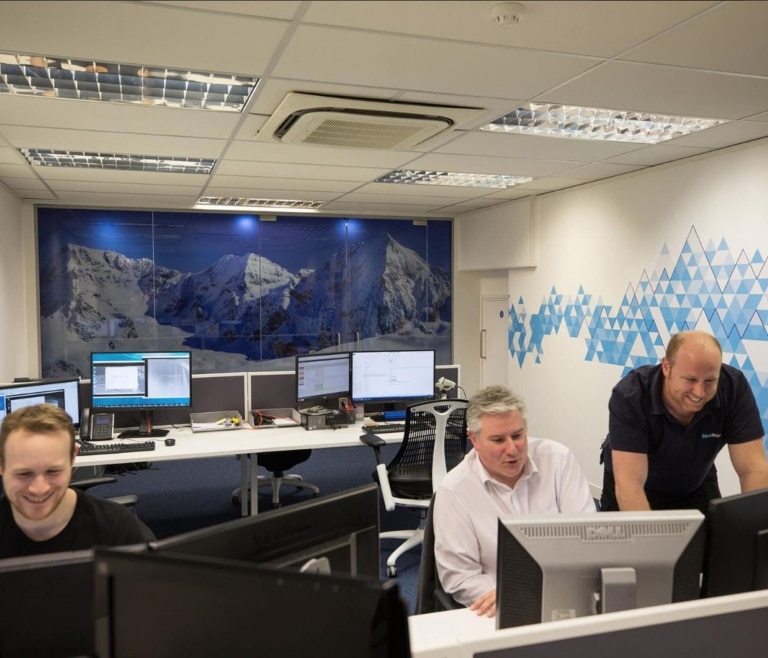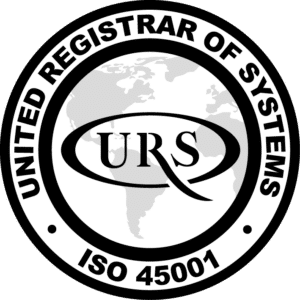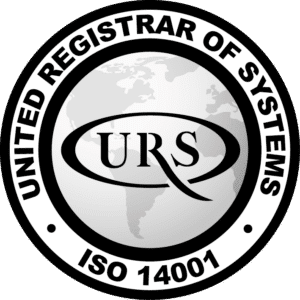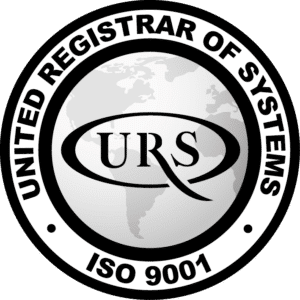The Right Office Design For Your Business | Westcountry Group
Nov 7, 2023 • 7 minutes

When it comes to the success of your business, the design of your office space is often an overlooked yet critical factor. The layout of your workspace not only impacts its ambiance and functionality but also significantly influences employee productivity and satisfaction.
Westcountry Group specialises in commercial office refurbishment services, providing top-tier expertise in interior design. Our team has over 45 years commercial refurbishment experience, so you can trust us to be your reliable partner in creating the best office environment for you and your business.
In this blog, we will explore a variety of office layouts, outlining the pros and cons of each, to help you make an informed decision about the right design for your business.
Individual offices and glass-partitioned offices
Individual offices are workspaces designed for a single person, providing them with an enclosed environment to focus on their tasks. These offices are typically separated from the communal areas and other workspaces.
Glass-partitioned offices involve using glass walls or partitions to create enclosed spaces within an office. These partitions allow natural light to flow through the office while maintaining some level of separation between individuals. Glass-partitioned offices are often chosen for their modern, open feel.
- Privacy: Individual offices and glass partitions offer a high degree of privacy for employees
- Compliance: These layouts are ideal for companies handling sensitive information, helping meet GDPR and and other data protection regulations
- Professionalism: Individual offices convey a strong sense of professionalism
- Customisation: Employees can personalise their spaces to enhance comfort and productivity
- Reduced distractions: Fewer distractions lead to increased focus and productivity
- Isolation: Limited interaction and collaboration among employees
- Space and cost: These layouts often require more square footage and can be costly
- Lack of visibility: Reduced visibility may lead to a lack of oversight and management challenges
- Limited natural light: Partitions can reduce the natural light flow
- Inflexibility: The fixed nature of these layouts can hinder adaptability
Open-plan offices
- Collaboration: Open plan offices foster teamwork and communication
- Efficiency: Maximising space and accommodating more employees
- Cost-effective: Fewer walls and partitions mean lower construction costs
- Flexible layout: Easy to rearrange as the company grows or changes
- Inclusivity: Encourages interaction and a sense of unity among employees
- Distractions: Noise and lack of privacy can reduce productivity
- Lack of personal space: Some employees may feel cramped
- Reduced privacy: Sensitive conversations may be overheard
- Limited storage: Open spaces may lack personal storage areas
- Challenging to concentrate: For tasks requiring deep focus, open spaces can be challenging
Activity-focused zones
- Versatility: Activity-focused zones offer various spaces for different work styles
- Creativity: Encourage innovation with diverse work environments
- Meeting space: Includes areas for presentations and group discussions
- Adaptability: The layout can be tailored to specific tasks or projects
- Work-life balance: Areas designed for relaxation and promote employee well-being
- Space requirements: Creating distinct zones can be space-intensive
- Management: Requires clear communication and management to maximise effectiveness
- Potential distractions: Employees may be tempted to socialise in shared spaces
- Cost: Designing various zones can be expensive
- Complexity: A multi-zone layout can be complex to manage
Biophilic offices
- Well-being: Biophilic offices enhance employee well-being by connecting them with nature
- Creativity: A serene atmosphere promotes creativity
- Environmental consciousness: Showcases a commitment to the environment
- Improved air quality: Natural elements can enhance indoor air quality
- Enhanced aesthetics: Living walls and natural materials create an appealing office environment
- Initial investment: May require significant upfront costs
- Maintenance: Living elements can be challenging to maintain
- Design complexity: Integrating natural elements can be complex
- Allergies: Some employees may have allergies to natural materials
Sustainable offices
Sustainable offices are workspaces designed and operated with a primary focus on minimising their environmental impact while promoting long-term resource efficiency. Sustainable design features may include energy-efficient lighting, heating, and cooling systems, low-water-usage fixtures, and the use of renewable energy sources like solar panels. Sustainable offices often incorporate recycling programs, waste reduction practices, and sustainable procurement of office supplies and furniture.
- Environmental impact: Reduces your carbon footprint
- CSR: Aligns with Corporate Social Responsibility initiatives
- Cost savings: Energy-efficient features can lead to long-term cost savings
- Innovative design: Sustainable offices can showcase forward-thinking design
- Market appeal: Attracts eco-conscious clients and employees
- Initial costs: Sustainable design elements can be expensive
- Maintenance: Ongoing maintenance and updates are necessary
- Limited design freedom: Some sustainable elements may limit design flexibility
- Market unfamiliarity: Some clients and employees may not understand or appreciate sustainable design
- Regulatory challenges: Adhering to sustainability standards can be complex
Hot desking
- Flexibility: Adaptable to changing workspace needs
- Efficient use of space: Allows more employees to share the same space
- Cost savings: Reduces the need for permanent desks and offices
- Encourages collaboration: Employees can work in different areas, fostering collaboration
- Remote work-friendly: Ideal for businesses with remote working policies
- Availability challenges: Finding an available workspace can be frustrating
- Personalisation: Employees may lack a sense of ownership over their workspace
- Lack of stability: Frequent desk changes may lead to instability
- Security concerns: Data security and privacy can be challenging in shared spaces
- Chaos: Hot desking can create a chaotic atmosphere in the office
Smart offices
- Efficiency: Integrates technology to streamline processes and enhance productivity
- Security: Enhances data and physical security
- Innovation: Showcases the company as a tech-savvy industry leader
- Improved collaboration: Technology facilitates seamless communication and collaboration
- Initial costs: Setting up a technology infrastructure can be expensive
- Maintenance: Requires ongoing technology updates and maintenance
- Training: Employees may require training to use the technology effectively
- Technological complexity: Managing the technology can be complex
Best for: Tech-savvy businesses and those looking to stay at the forefront of workplace innovation.
Things to consider when choosing the right office layout:
- Company culture: Ensure your office design aligns with your company’s values and culture
- Employee needs: Understand your employees’ work styles and preferences
- Space and budget: Assess available space and budget constraints
- Privacy vs. collaboration: Balance the need for individual focus with collaborative spaces
- Growth and flexibility: Plan for future growth or downsizing
- Sustainability: Consider your environmental impact and corporate social responsibility
- Technology integration: Evaluate the role of technology in your office layout
With our bespoke 4D virtual reality office planning service, you can see your new space before work begins, ensuring that your revamped office space will be nothing short of perfect for you new working environment.
If you’re ready to embark on an office refurbishment journey that perfectly aligns with your business needs, please contact us today to find out more – call 0330 030 0330, email: sales@westcountrygroup.com or visit https://www.westcountrygroup.com/commercial.
We have managed a number of office refurbishments, and here is what our customers had to say: https://www.westcountrygroup.com/commercial/our-work#studies.
Choose Westcountry Group for an office transformation that not only reflects your brand but also fosters a thriving working environment.






